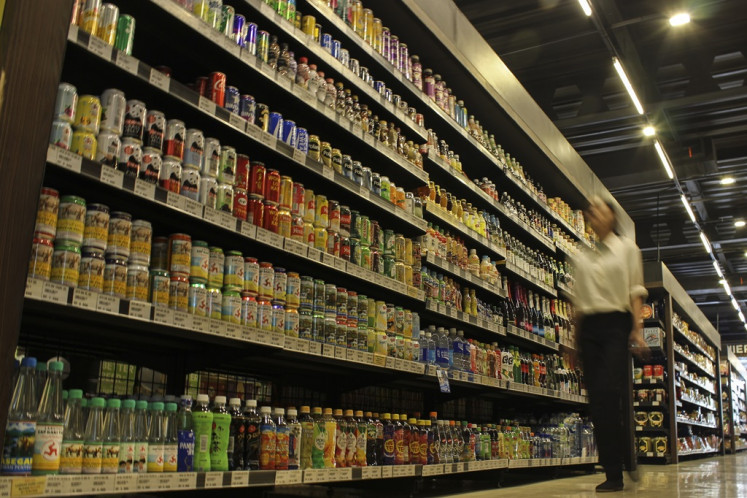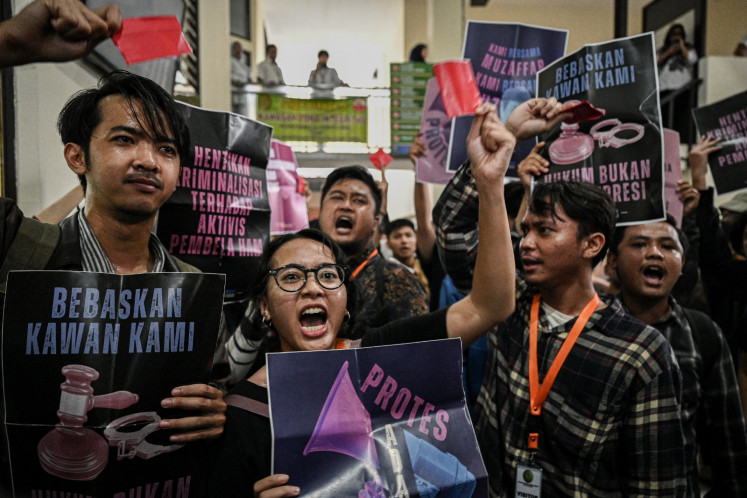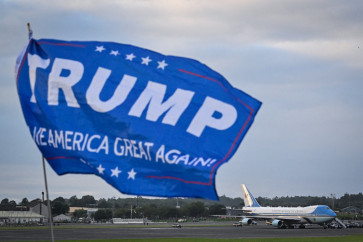Popular Reads
Top Results
Can't find what you're looking for?
View all search resultsPopular Reads
Top Results
Can't find what you're looking for?
View all search resultsTrump's self-defeating trade agenda
The unpredictability of Trump’s trade policies poses a grave threat to the global economy.
Change text size
Gift Premium Articles
to Anyone
W
hile United States President Donald Trump pursued a range of protectionist policies during his first term, the economic chaos and uncertainty he has unleashed since returning to the White House and launching his global trade war make those earlier efforts look mild by comparison.
Railing against countries that run trade surpluses with the US, Trump has vowed to impose “reciprocal tariffs” until all of America’s trade deficits are eliminated. Yet he has imposed sweeping tariffs even on countries with which the US runs a trade surplus, such as Australia.
The Trump administration has cited a wide range of reasons for its tariff hikes beyond reducing bilateral trade deficits, including national security, job creation and raising government revenue. Trump and his advisers claim that other countries will be forced to negotiate and ultimately lower their own tariffs on US goods. But the recent deal between the US and the United Kingdom, which imposes a 10 percent levy on most British exports, shows that even Trump’s “reduced” tariffs remain historically high.
The unpredictability of Trump’s trade policies poses a grave threat to the global economy. Trump’s tariff announcements have been followed by numerous delays and revisions, and his deadlines for finalizing new trade deals have come and gone, only to be extended again. This erratic trade policy, combined with his apparent reluctance to follow through on his threats, has given rise to the nickname “TACO,” or “Trump Always Chickens Out.”
So far, the Trump administration has secured new trade agreements with only a handful of countries, and even those have come with unexpected conditions. Earlier this month, for example, Trump announced a trade deal with Vietnam that imposes a 20 percent tariff on Vietnamese imports, but only if Vietnam eliminates its own tariffs on US goods and its exports contain no Chinese components, otherwise, the rate jumps to 40 percent. Indonesia, for its part, accepted a 19 percent tariff in exchange for granting most US goods duty-free access to its domestic market. So much for fairness and reciprocity.
Similarly, tariffs on Chinese goods jumped from 10 percent to 145 percent, then were returned to 10 percent, at least temporarily. But the average US tariff on Chinese imports still stands at 51.1 percent, and Trump could raise it again if the two countries fail to reach a trade deal by August 12.
Trump has also threatened to impose 30 percent tariffs on the European Union and Mexico. While EU policymakers are hoping to avoid the tariffs through negotiations, they are reportedly considering retaliatory “anti-coercion” measures of their own.



















